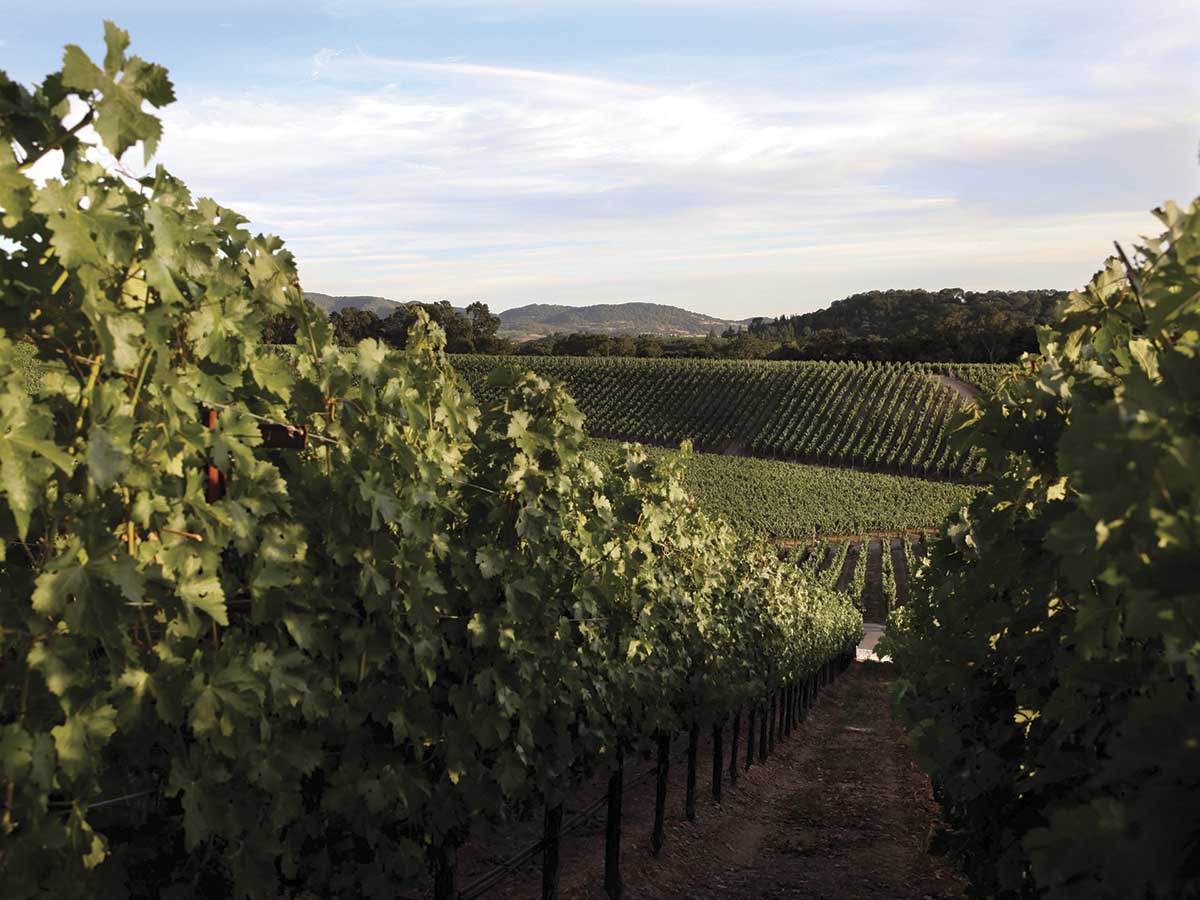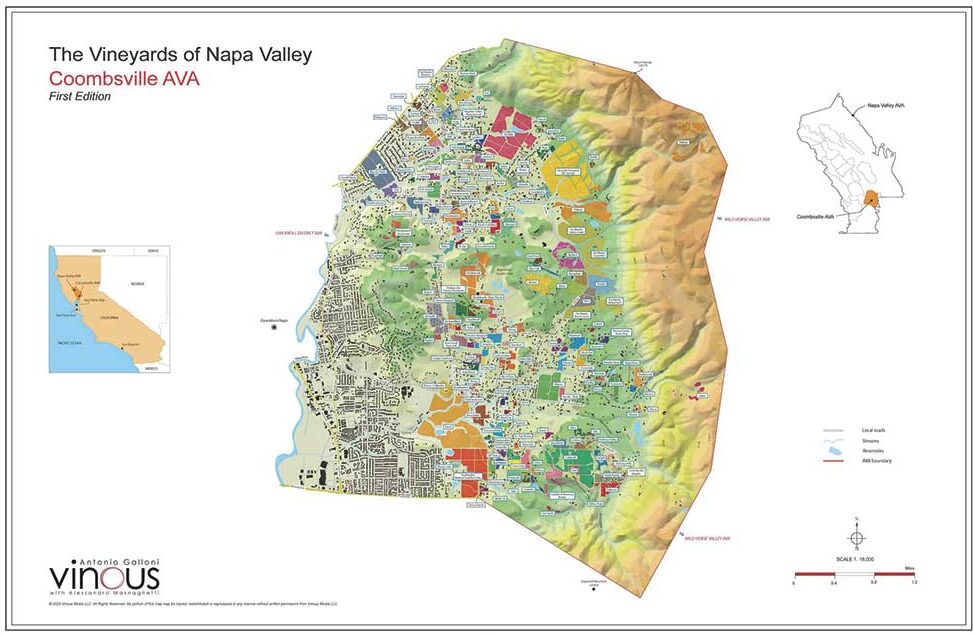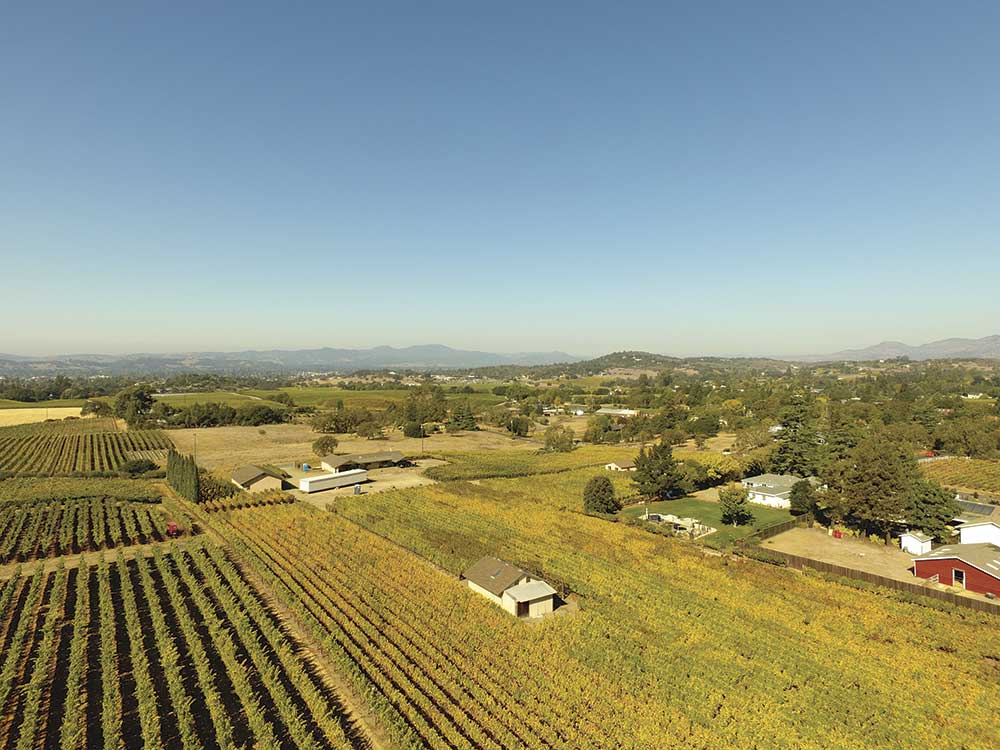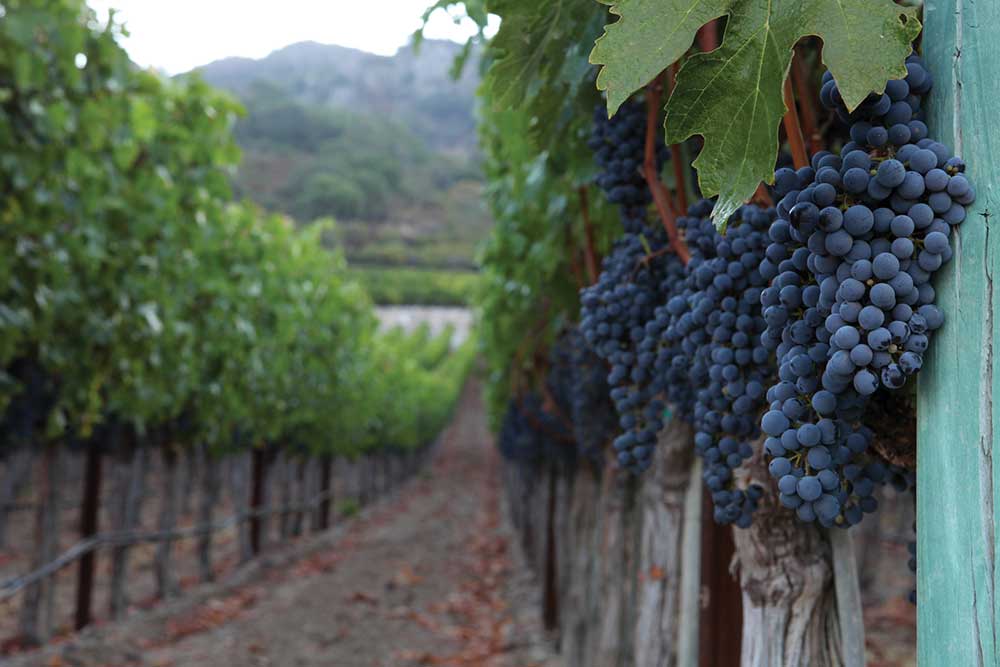SIP
Coombsville
An Intimate Wine Country Experience
WRITTEN BY Melissa Vogt
|
Published On: April 04, 2025

Photo above courtesy of Palmaz Vineyards
Napa Valley is renowned for its breathtaking landscapes, world-class wines, and diverse terroirs, however, while many envision California wine country as a warm, sun-drenched region, the Coombsville AVA demonstrates the reality is far more nuanced. Napa Valley is home to 16 nested American Viticultural Areas (AVAs), each with distinct climates and growing conditions. Coombsville, one of the valley’s hidden gems, remains one of the valley’s coolest, offering gentle, moderated temperatures and an extended growing season. This climate yields wines with a striking balance of acidity and ripeness, deep fruit complexity, and refined tannin structures.
From Livestock to Vineyards
Coombsville traces its roots back to Nathan Coombs, an early Napa County settler who founded the city in 1847. The area was initially dedicated to livestock and agriculture, with vast prune orchards dotting the landscape. It wasn’t until the mid-20th century that winegrowers recognized the region’s potential. Frank Farella, a pioneer in the industry, planted the first Cabernet Sauvignon and Merlot vines in the 1970s. As demand for his fruit surged, more vintners turned their attention to Coombsville’s unique terroir. The region’s reputation grew, culminating in its official designation as an AVA in 2011.
A Unique Location
Coombsville’s distinctive character stems from its location. It is the southernmost AVA in Napa, situated northeast of Los Carneros. Coombsville benefits from its proximity to San Pablo Bay and the cooling effects of the Vaca Mountain foothills. Its close location to downtown Napa makes it a convenient destination for travelers exploring the region’s wineries.
The AVA’s climate is influenced by morning fog and cool sea breezes, which moderate temperatures and prevent extreme heat spikes. Vineyards stretch up the slopes of Mt. George, reaching elevations of up to 1,900 feet. This prolonged growing season allows grapes to achieve an ideal balance of acidity and phenolic ripeness, leading to wines of exceptional depth and refinement.
Beyond climate, Coombsville’s geological foundation plays a crucial role in shaping its wines. “It’s a caldera in the shape of a horseshoe,” explained Frank Bishop, proprietor of Terra Solis Vineyard and Vice President of the Coombsville Vintners & Growers. This caldera, formed by ancient volcanic activity, has left behind rocky, well-draining soils that challenge growers but produce grapes of remarkable concentration.
“We have a lot of volcanic and rocky soil—it’s one of the reasons why Coombsville became a winegrowing region so late. It’s very rocky and difficult for farming,” he added. However, this rugged landscape contributes to the quality of the wines. “The diversity afforded by the elevation and soil types across the AVA add depth and complexity to the wines,” noted Christian Gastón Palmaz, Chief Operating Officer of Palmaz Vineyards.
A Distinctive Style
The region’s diverse terroir is reflected in its wines. Not only do the soil and elevation variations bring forth depth and complexity in the wines, but these dynamic growing conditions also “impart a distinctive minerality and structure,” said Julien Fayard, co-owner of Covert Estate. Coombsville wines are celebrated for their power and finesse, embodying the artisanal spirit of Napa Valley.
“The region, once a well-kept secret, has long been the source of grapes for many well-recognized wines,” Fayard continued. Today, Coombsville remains home to more grape growers than vintners, with most wineries being small, family-owned operations. However, as Bishop acknowledged, “a few big players” were initially drawn to the AVA by its exceptional terroir and growing prestige.
“Coombsville has the cozy, artisanal feel of old-school Napa,” said Palmaz. “Its smaller streets meander through the AVA between mostly family-owned estates with smaller productions. The people behind these projects are deeply passionate for the land they tend.” This commitment to the land is evident in the wines themselves. Cabernet Sauvignon, the dominant varietal, is crafted with restraint, often employing minimal intervention and careful oak aging to showcase the terroir. “The less we manipulate the wine, the more it reflects its origin,” agreed Fayard.
Classic Varietals
While Cabernet Sauvignon is Coombsville’s hallmark, it manifests in a range of styles due to the region’s varied elevations, soil compositions, and winemaking approaches. The result is a collection of multifaceted wines that balance power, elegance, and complexity.
Beyond Cabernet Sauvignon, the AVA supports other Bordeaux varieties. Covert Estate produces single-varietal Cabernet Franc and Syrah alongside its Cabernet Sauvignon. Shadybrook Estate Winery also embraces diversity, crafting Merlot, Malbec, Cabernet Franc, Petit Verdot, and its flagship Cabernet.
Coombsville’s cooler climate also allows for limited production of white wines. Palmaz Vineyards offers Chardonnay, Riesling, and Muscat Canelli, along with a Cabernet Sauvignon-based Rosé. Terra Solis Vineyard similarly produces a Rosé of Cabernet Sauvignon, highlighting the AVA’s versatility.
 Discover Coombsville
Discover Coombsville
For those eager to explore this distinctive region, the third annual Discover Coombsville event offers the perfect opportunity. Hosted at CIA Copia in Napa on Saturday, April 26, from 1:00 to 4:00 p.m., the event showcases more than 25 Coombsville wine brands. Attendees will have the chance to meet vintners, grape growers, and winemakers, all while enjoying wines that truly reflect the essence of this remarkable AVA. Expect to see members of these family estates, farmers, and winemakers on the ground at this event, filling glasses and sharing their passion.
Captivating Cabernets
Covert Estate: The 2021 Cabernet Sauvignon Clone 341 offers a bold yet refined expression, with ripe dark fruit aromas leading to layers of blueberry and rich cocoa on the palate. Notes of black tea and earthiness add depth, while smooth, mellow tannins create a velvety texture.
Palmaz Vineyards: The 2021 Cabernet Sauvignon balances depth and elegance with black currant and ripe orange peel aromas accented by warm clove and cinnamon. On the palate, dark fruit and berry layers intertwine with hints of spicy oak and chocolate, all framed by firm yet polished tannins.
Shadybrook Estate Winery: The 2021 Cabernet Sauvignon delivers an evocative bouquet of graphite, fennel, and cured meats, complemented by dark chocolate and cedar. Lush black raspberry, espresso, and mocha create a harmonious interplay of fruit and roasted complexity, leading to a velvety finish.
Terra Solis Vineyard: The 2021 CABi Cabernet Sauvignon captivates with its floral aromatics, showcasing fresh roses, crushed leaves, and vibrant red cherry. Fine-grained tannins provide a supple texture, while the wine’s taut structure and lively acidity lend a sense of elegance and precision.



